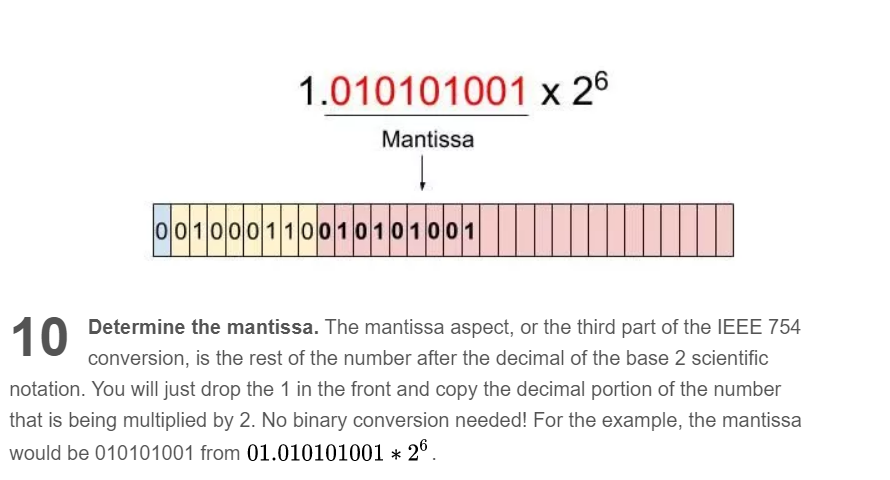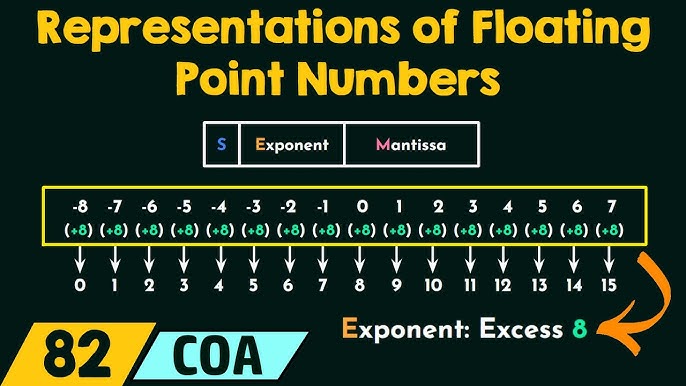Understanding Significand Mantissa: A Key Concept in Floating-Point Numbers

In the world of computer science and numerical computing, understanding the structure of floating-point numbers is essential. One critical component of this structure is the significand mantissa, which plays a pivotal role in representing the precision of a floating-point number. Whether you're a programmer, a data scientist, or simply curious about how computers handle numbers, grasping this concept is key to optimizing performance and accuracy in calculations. Let’s dive into what the significand mantissa is, how it works, and why it matters in floating-point representation, floating-point arithmetic, and numerical precision.
What is the Significand Mantissa?

The significand mantissa, often referred to simply as the “mantissa,” is the part of a floating-point number that represents its precision. In a floating-point format, a number is expressed as:
Number = (±) 1. Mantissa × 2Exponent.
Here, the mantissa is the fractional part that follows the binary point (or decimal point in base 10). It determines the significant digits of the number, while the exponent defines the scale. For example, in the number 1.5 × 22, 1.5 is the significand mantissa, and 2 is the exponent.
How Does the Significand Mantissa Work in Floating-Point Representation?

In binary floating-point representation, the mantissa is stored in a normalized form, meaning the leading digit is always 1 (implied and not stored explicitly). This normalization saves space and ensures efficient use of bits. For instance, in the IEEE 754 standard, a single-precision floating-point number (32 bits) allocates 23 bits to the mantissa, 8 bits to the exponent, and 1 bit to the sign. This structure allows for a balance between precision and range in numerical computations.
Key Components of Floating-Point Numbers
- Sign Bit: Indicates whether the number is positive or negative.
- Exponent: Determines the power to which the base (usually 2) is raised.
- Mantissa: Provides the significant digits of the number.
| Component | Bits (Single Precision) | Purpose |
|---|---|---|
| Sign | 1 | Determines the sign of the number |
| Exponent | 8 | Defines the scale of the number |
| Mantissa | 23 | Represents the precision of the number |

Why is the Significand Mantissa Important?

The significand mantissa is crucial for maintaining numerical precision in computations. Without it, floating-point numbers would lack the granularity needed for accurate calculations. For instance, in scientific computing or financial applications, even small errors in the mantissa can lead to significant discrepancies in results. Understanding how the mantissa interacts with the exponent helps programmers optimize algorithms and minimize rounding errors.
Common Challenges with Mantissa in Floating-Point Arithmetic
- Rounding Errors: Limited bits in the mantissa can lead to rounding, affecting accuracy.
- Overflow/Underflow: Extreme values may exceed the range of the exponent or mantissa.
- Cancellation: Subtracting nearly equal numbers can result in significant loss of precision in the mantissa.
💡 Note: Always consider the number of bits allocated to the mantissa when working with floating-point numbers, as it directly impacts precision.
Practical Tips for Working with Significand Mantissa

To effectively work with the significand mantissa, follow these tips:
- Use higher-precision formats (e.g., double precision) when accuracy is critical.
- Be mindful of rounding modes in programming languages like C++ or Python.
- Test algorithms for numerical stability, especially in iterative computations.
Checklist for Mastering Significand Mantissa
- Understand the role of the mantissa in floating-point representation.
- Familiarize yourself with the IEEE 754 standard for binary floating-point formats.
- Practice debugging precision-related issues in code.
- Explore tools for visualizing floating-point numbers, such as binary converters.
The significand mantissa is a fundamental concept in floating-point numbers, ensuring precision and accuracy in numerical computations. By understanding its role and limitations, you can write more efficient and error-free code. Whether you're dealing with scientific simulations, financial models, or everyday programming tasks, mastering this concept is invaluable. floating-point representation, floating-point arithmetic, numerical precision.
What is the difference between mantissa and exponent in floating-point numbers?
+
The mantissa represents the significant digits of the number, while the exponent defines the scale or power of the base (usually 2). Together, they form the core of floating-point representation.
Why is the mantissa normalized in floating-point numbers?
+
Normalization ensures that the leading digit of the mantissa is always 1, which is implied and not stored. This saves space and simplifies calculations in floating-point arithmetic.
How does the mantissa affect numerical precision?
+
The number of bits allocated to the mantissa determines the precision of a floating-point number. More bits allow for greater accuracy, but also increase storage requirements.


